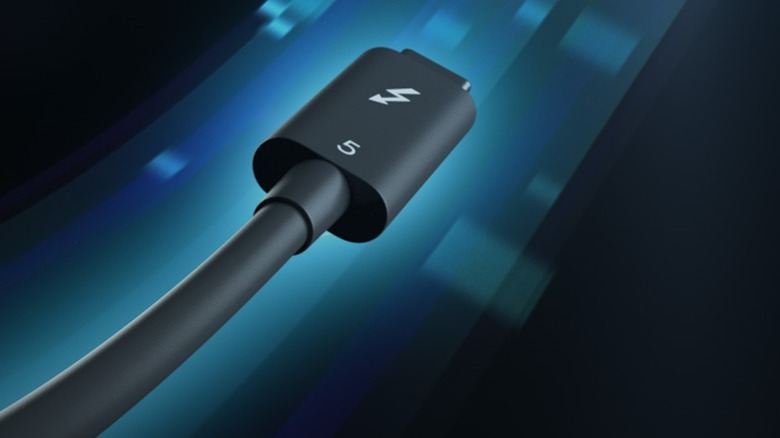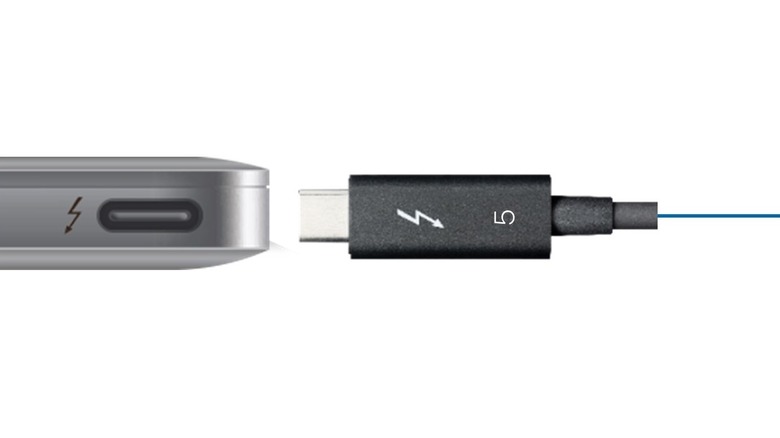Thunderbolt 5 Explained: How It Works And Why You Should Care
On Tuesday, Intel officially launched Thunderbolt 5, the latest version of its high-speed cable connectivity protocol. Thanks to an Intel executive accidentally tweeting a photo that showed off some of the impressive specs for the update, this revision has been highly anticipated for two years, and today's news is in line with what was inadvertently leaked in 2021, promising speeds of 80 to 120 Gbps.
Thunderbolt can be confusing at first glance, as going back to 2015, it switched from a Mini DisplayPort connector to a USB Type-C connector. It's not the same as USB, but generally speaking, a Thunderbolt port/host starting with the 2015 Thunderbolt 3 revision will support USB Type-C, even if USB Type-C doesn't inherently support Thunderbolt.
So you're not locking yourself out of anything by getting a computer with Thunderbolt ports. You're opening yourself up to more possibilities since Thunderbolt is faster, and now, with Thunderbolt 5, it's significantly faster than it's ever been before.
How much better than Thunderbolt 4 is Thunderbolt 5?
As it compares to Thunderbolt 4, Intel has made pretty big strides with Thunderbolt 5. In terms of raw speed, the bandwidth is doubled bidirectionally, from 40 Gbps to 80 Gbps. There's also a "Bandwidth Boost" to 120 Gbps, which Intel says "will provide up to 120 Gbps for the best display experience" and "up to three times the throughput for video-intensive usage, up to 120 Gbps." In practice, per information provided by Intel, Bandwidth Boost changes Thunderbolt 5 from being a symmetrical 80 Gbps to transmitting 120 Gbps while receiving 40 Gbps.
The PCI Express speed has also been doubled from 32 Gbps to 64 Gbps, allowing for better-performing external SSDs and graphics cards. The networking speed has, you guessed it, been doubled as well from Thunderbolt 4, from 32 Gbps to 64 Gbps. All of this increased throughput has made it so that a Thunderbolt port can now support dual 6K monitors (or a single 8K monitor) with Thunderbolt 5, compared to dual 4K monitors with Thunderbolt 4. Possible charging wattage has also increased from 140W to 240W, while the minimum available wattage jumped from 100W to 140W.

